Building New Homes vs. Buying Existing Homes
A look at the advantages offered by building new, modular homes.
All of the recent news about housing has been buzzing about the emerging seller’s market. Well, once you sell your house, you are faced with having to either buy or build a new one. Did you know - most homebuyers can afford to build a new home for about the same overall cost of buying an existing home?
A study released by the National Association of Homebuilders aggressively compares the two. Their research revealed the following:
Operating costs average just over $6,900 a year.
The largest operating costs are fuels and property taxes – at just under $2,500 each.
Narrowly defined maintenance costs average $547 a year, but decline as the home becomes newer – from $564 a year for homes built before 1960 to just $241 for homes built after 2008.
Overall operating costs average $3.77 per square foot.
Operating costs per square foot decline as the home becomes newer, from $4.26 per square foot in homes built before 1960 to $2.92 for homes built after 2008.
Overall annual operating costs average 4.24 percent of the home’s value.
Operating costs as a fraction of value also decline as the home becomes newer, from almost 5 percent of the home’s value for those built before 1960 to just below 3 percent for homes built after 2008.
The study, which assumes that the typical buyer is purchasing a home for $200,000, shows that a buyer can afford to pay 23 percent (or $37,655) more for a new home than for one built before 1960. This savings is enough to cover the price of an extra, full bathroom.
Combine these savings with the historically low interest rates on mortgages and low housing inventory and you have yourself a very convincing argument for building instead of buying.
Now that you’re convinced building a new home is a better investment, your choice is between an on-site, stick-built home and an off-site, modular/system-built home. Before you jump to any conclusions, answer this question:
Would you have the parts to your new car shipped to your house and then assembled in your driveway? Of course not!
That would mean your new car would be exposed to any changes in weather, the parts needed to build the car would be at risk for theft and, once completed, the car itself would be more likely to have structural problems in the future.
The same is true for your home.
Modular homes are built in an indoor, climate controlled facility by skilled craftsmen who have become experts in every area of custom home construction. There are several advantages to this indoor, system-building process - we can eliminate your home’s exposure to the elements during construction, reduce on-site construction theft and can engineer a strong, more dependable home.
In addition to these basic advantages, choosing off-site construction means that your come can be built in our production facility at the same time your foundation is being poured and other site work is completed. By working on both parts of the process at once, we can reduce the length of your construction loan – saving you money on interest.
For those of you that have heard the misconception that modular homes lack architectural designs and cannot be customized, we encourage you to browse our interior and exterior photo galleries, as well as our hundreds of customizable floor plans. You will find that these homes have immense curb appeal and incredible interior options.
If you are serious about moving out and moving up, custom modular homes may be your best option.

 Any Style
Any Style Two-Story
Two-Story Ranch
Ranch Cape Cod
Cape Cod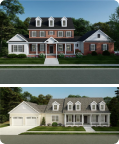 American Dream
American Dream Coastal Lifestyle
Coastal Lifestyle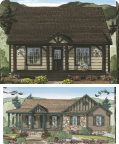 Lake & Lodge
Lake & Lodge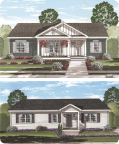 Homestead
Homestead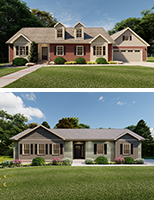 LeGrand Series
LeGrand Series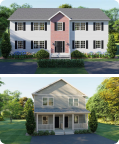 Multifamily
Multifamily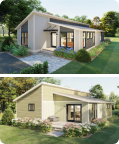 Modern Living
Modern Living